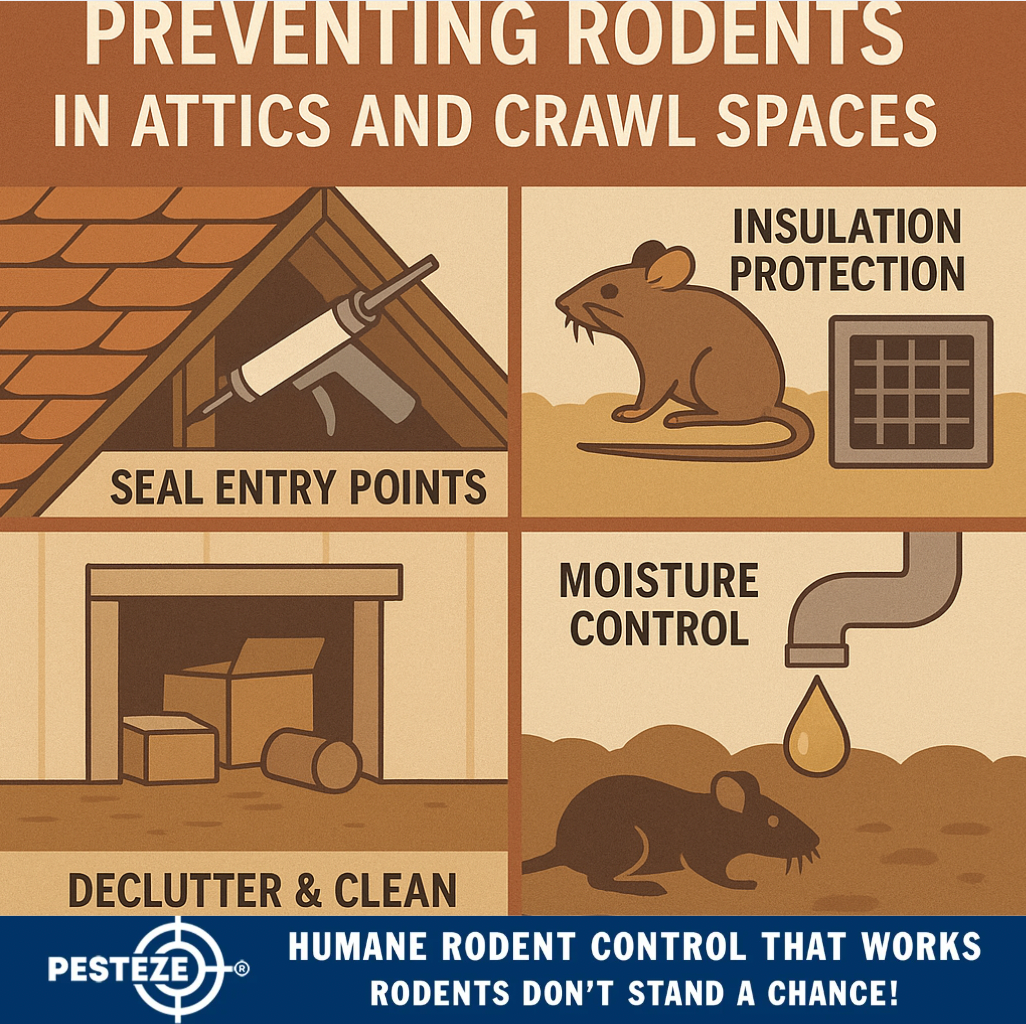PREVENTING RODENTS IN ATTICS AND CRAWL SPACES

PREVENTING RODENTS IN ATTICS AND CRAWL SPACES
SUMMARY
Attics and crawl spaces are prime nesting areas for rodents due to warmth, insulation, and easy access. This guide explains how to secure these hidden spaces and prevent infestations before they start.
FEATURES
-
Seal Entry Points: Close gaps in rooflines, vents, and foundations.
-
Insulation Protection: Guard nesting materials from rodent use.
-
Install Vent Covers: Use mesh screens to block access.
-
Declutter & Clean: Remove debris and stored junk from hidden spaces.
-
Moisture Control: Fix leaks and improve ventilation.
-
Regular Inspections: Check seasonally for droppings, nests, or gnaw marks.
DESCRIPTION
Rodents are naturally drawn to attics and crawl spaces because these areas are dark, warm, and often overlooked by homeowners. Unfortunately, once inside, they can cause serious problems by chewing wires, contaminating insulation, and spreading disease. Preventing infestations in these hidden spaces requires proactive steps.
The first step is sealing entry points. Small cracks in the roofline, gaps around vents, or holes in the foundation give rodents easy access. Use caulk, steel wool, or heavy-duty mesh to close these openings. Chimneys and attic vents should also be covered with fine mesh screens to keep rodents out without blocking airflow.
Insulation is a common nesting material for rodents. They shred it to build nests, leaving contaminated and damaged areas behind. Installing protective barriers around insulation or using rodent-resistant insulation helps reduce this risk.
Vent covers are another critical safeguard. Many attics and crawl spaces have open or poorly protected vents that act as gateways for pests. Installing durable vent covers ensures rodents can’t slip through.
Decluttering hidden spaces is equally important. Crawl spaces often accumulate debris, cardboard, or unused items that serve as perfect nesting materials. Keeping these areas clean and clear makes them less attractive to rodents.
Moisture control also plays a role. Crawl spaces especially tend to be damp, attracting rodents searching for water. Fixing leaks, using dehumidifiers, and ensuring proper drainage reduces the appeal of these spaces.
Finally, conduct regular inspections. Seasonal checks of attics and crawl spaces can catch early warning signs such as droppings, gnaw marks, or shredded materials. Addressing these signs quickly prevents a minor issue from becoming a major infestation.
By combining sealing, insulation protection, vent covers, cleanliness, moisture control, and inspections, homeowners can successfully rodent-proof their attics and crawl spaces while protecting the rest of the home.
- Saharsh Bansal


Comments 0